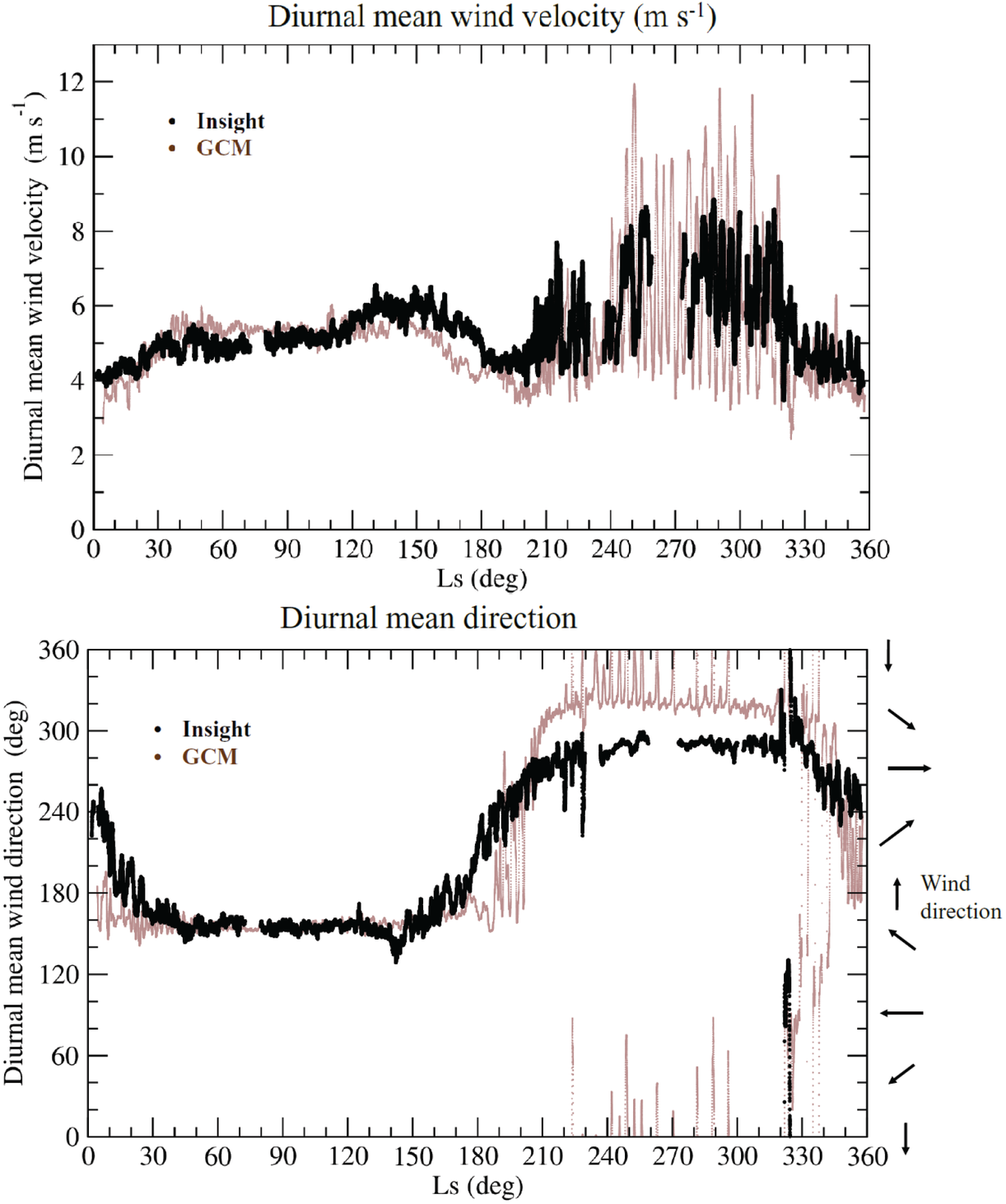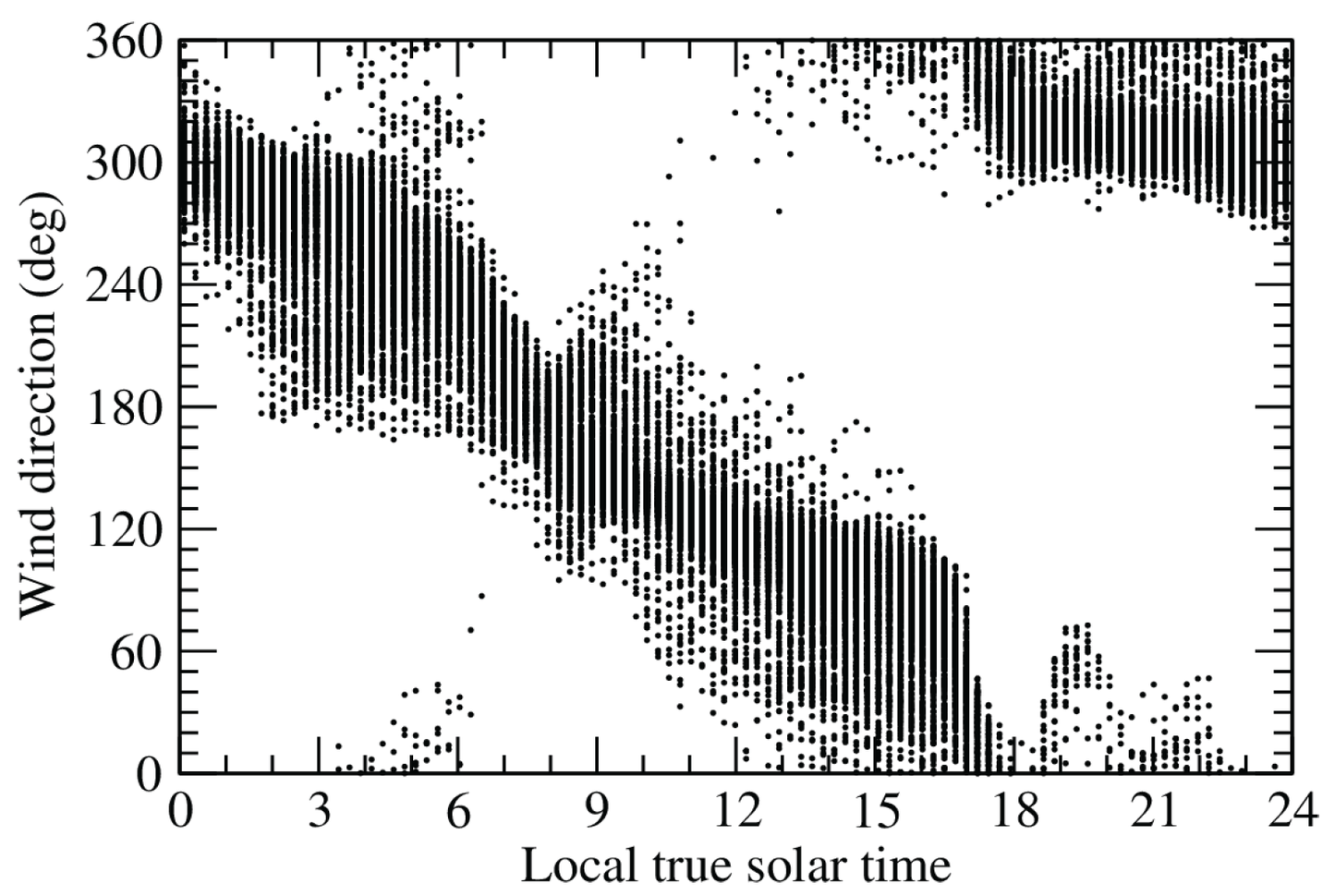More than one Martian year of meteorology observed by the InSight Lander
- 1Laboratoire de Meteorologie Dynamique (LMD), Sorbonne University, CNRS, Paris, France
- 2Cornell Center for Astrophysics and Planetary Science, Cornell University, Ithaca, NY, USA
- 3Aeolis Research, Pasadena, CA, USA
- 4Centro de Astrobiologia (CAB), Madrid, Spain
- 5Open University, Milton Keynes, UK
- 6Johns Hopkins Applied Physics Lab, Laurel, MD, USA
- 7Institut de Physique du Globe de Paris (IPGP), France
- 8Jet Propulsion Laboratory, Pasadena, CA, USA
InSight has been measuring atmospheric pressure, wind and temperature almost continuously since December 10, 2018 (around Ls=304° of Martian Year 34), 14 sols after its landing. It is located in Elysium Planitia, at 4.50238°N, 135.62345°E in planetocentric coordinates (-2614 m altitude below MOLA areoid). Hence, the geophysical lander is providing the best long-duration meteorological Mars station since Viking. In this presentation we will review the meteorological phenomenons that characterize the pressure and wind measurements at timescales larger than 1000 seconds. A subset of the meteorological observations obtained at the beginning of the mission was previously reporded in Banfied et al. (2020) and Viúdez-Moreiras et al. (2020) .The analysis is helped by comparing the results with prediction from the LMD numerical global climate model (GCM, Forget et al. 1999) as reported before landing by Spiga et al. (2018).
At such timescale, the pressure measurements are characterized by 1) the large seasonal oscillation mostly due to the CO2 condensation and sublimation cycle; 2) baroclinic waves with periods of typically 2.5 and 7 sols and amplitude up to 4 Pa (Figure 1), and 3) thermal tides with amplitude up to 40 Pa and period of 1 or a fraction of a sol (diurnal, semi-diurnal, etc…).
Similarly, the wind direction and velocity can be decomposed into various components. The diurnal mean wind velocity at 1.2 m is remarkably constant around 5 m/s during the first part of the year between Ls=0° and Ls=200° (Figure 2, top). After that date, during northern fall and winter, the wind is stronger and highly variable from day to day (between 4 and 9 m/s on diurnal average), closely following the baroclinic variations of pressure with maximum wind when the pressure is high. This is expected by the model, but it remains quite spectacular to observe how baroclinic waves can create real weather so close to the equator, with an alternation of quiet and windy sols. Throughout the year, the diurnal-mean wind direction slowly evolves between a northward direction (during most of the northern spring and summer) and west-north-westward direction in fall and winter between Ls=210° and 330° (Figure 2, bottom). This is also predicted by the model and correspond to the expected behavior of trade winds at the Insight landing site (Insight is exposed to a “western boundary current” around N. winter solstice). Superimposed on the diurnal mean flow, the wind is subject to large diurnal variations. As expected, the wind velocity is mostly controlled by the evolution of the boundary layer which tends to strongly reduce the wind velocity at night (between 5pm and 9am) when the atmosphere becomes stratified as the surface cools at night. However this diurnal cycle is not very well predicted by the GCM. Every day, during most of the year, the large-scale dominant wind is modulated by a regular diurnal 360° rotation induced by the weak, but non-negligible Northward-Eastward slope that characterizes the Insight landing site at regional scale. During some specific periods, and in particular during the regional dust storms that characterized Martian year 34 and 35 around Ls=320°, it seems that the planetary-scale thermal tide waves can influence the diurnal cycle in addition to the slope winds. This can be analyzed with the help of GCM simulations in which the region around Insight has been flattened.

Figure 1. The signature of baroclinic waves as a function of season illustrated by the detrended diurnal mean pressure. As previously reported by Haberle et al. (2018) using MSL data, Northern hemisphere baroclinic waves can be be significant at the equator.

Figure 2: Diurnal mean wind velocity and direction observed by Insight (black), compared to the prediction from the LMD GCM (brown)

Figure 3: Direction of the wind diurnal anomaly (1000-s averaged wind vector minus diurnal mean vector) as a function of local time during most of the year (period Ls=325°-0°-200°). The direction characterized by the expected diurnal rotation due to slope winds.
How to cite: Forget, F., Banfield, D., Spiga, A., Millour, E., Borella, A., Lange, L., Newman, C., Viúdez Moreiras, D., Pla-Garcia, J., Navarro, S., Mora-Sotomayor, L., Torres-Redondo, J., Rodriguez-Manfredi, J. A., Lewis, S. R., Lorenz, R. D., Lognonne, P., and Banerdt, W. B.: More than one Martian year of meteorology observed by the InSight Lander, European Planetary Science Congress 2021, online, 13–24 Sep 2021, EPSC2021-273, https://doi.org/10.5194/epsc2021-273, 2021.

